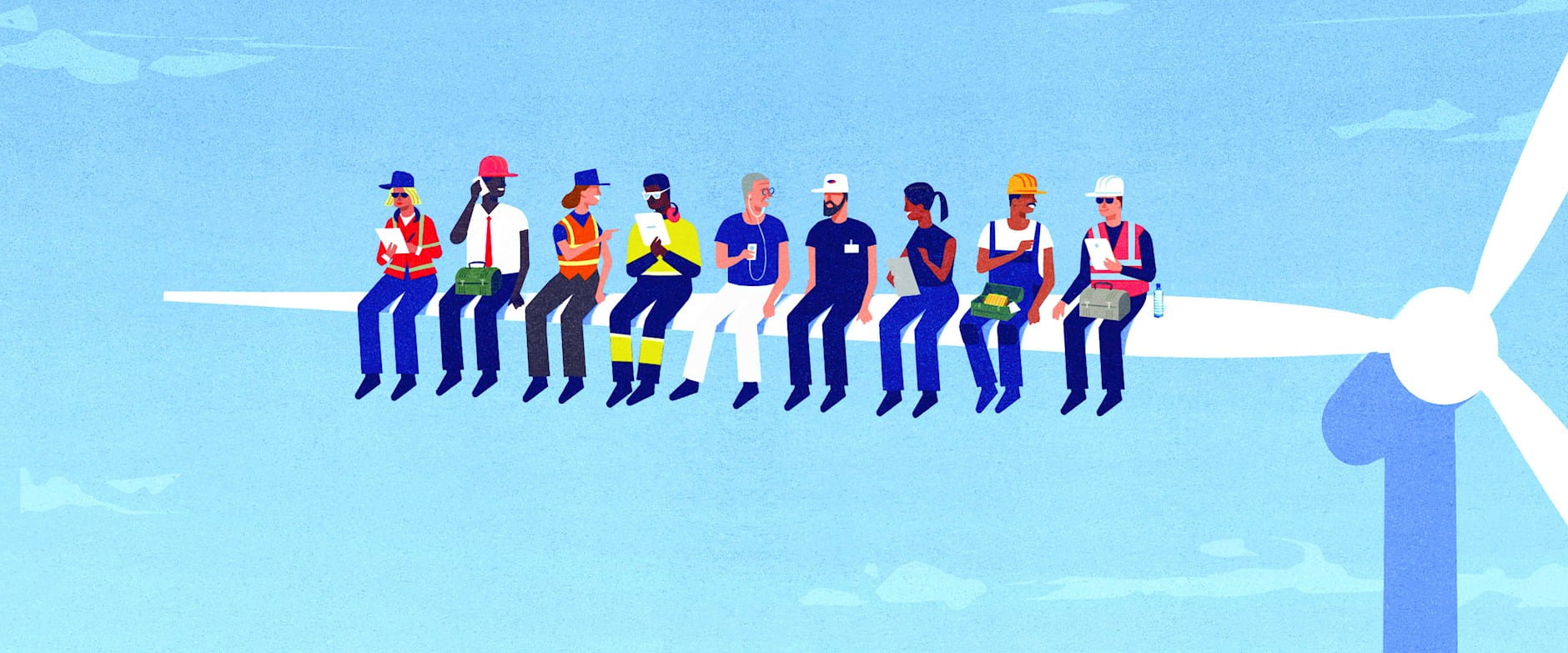You wouldn’t know it from current politics, but the US manufacturing sector is doing great. Average hourly earnings have risen 25 percent in the past decade. Manufacturing’s contribution to GDP grew from $1.8 trillion in 2008 to $2.2 trillion last year. Productivity, measured as output by hour, is up 10 percent in the past decade. Workers are making more things than they were a decade ago, and they’re making more money doing it.
But there are fewer workers. Two decades ago, close to 18 million people worked in US manufacturing. Now, despite the fact that the sector has created almost 1 million jobs since 2010, employment in manufacturing is closer to 12 million.
Plenty of jobs still exist in the US economy, but plenty have been lost. And the jobs that have vanished were good jobs, middle-class ones—the kind that helped families buy houses, cars, and college educations for their children. Many of the jobs were available to immigrants and workers without college degrees, and allowed them to work toward the American dream.
These job losses, which extend beyond manufacturing, represent a seismic economic shift, and how to replace them is a conundrum with which economists and policy makers are struggling. “We’re so accustomed to not dealing with this question, frankly, as is the government, that we’ve come to a point where people are upset about the quality of the jobs,” says Anthony P. Carnevale, director of the Georgetown University Center on Education and the Workforce.
Politicians have come up with plenty of proposals. President Donald Trump promises that an America-First policy will bring jobs back, including in coal mining and manufacturing. In February 2015, President Barack Obama announced an initiative to make community college free nationwide, but it went nowhere in Congress. In her presidential campaign, former Secretary of State Hillary Clinton proposed a job-retraining program, including tax credits for businesses that hire apprentices.
Would any of these work? If not, what should policy makers do to create middle-class jobs? We posed the latter question to a number of leading academics, who had a variety of suggestions for how to rebuild the middle-class job base—and, by extension, the middle class itself.

Rebuild roads, bridges, neighborhoods
Eric Zwick | Chicago Booth
There are a lot of middle-class, blue-collar workers who are having trouble finding work because of changes in the economy. There are jobs in infrastructure that are very much in the manufacturing and building vein, but we have not had major investment at the federal, state, or local level in infrastructure. Bridges, roads, public transportation—all this stuff is old relative to the infrastructure in most other developed countries. Infrastructure investment could create a lot of employment, and having better infrastructure could create more attractive places for businesses to open up. It could reduce commute times and increase productivity in a lot of ways. It could also help generate demand for the kinds of jobs that the middle class has been losing.
Another way to increase demand for middle-class labor is to reexamine the land-use and urban regulations governing what kind of structures we’re allowing and how quickly we’re allowing people to develop. We see this regulation in a lot of cities, with increasing prices in both housing and commercial real estate as a result. Land-use regulations benefit people who live in the cities already and who own, but at the expense of people who can’t afford to rent or use that land, and also at the expense of people who might want to move in. A lot of the jobs that go into building these structures—electrical, plumbing, roofing, tiling, HVAC—are high-skilled, blue-collar jobs that are nontradable. You can’t get a plumber from China or Mexico to do the work of a plumber here. Robots can’t do these jobs.
On the supply side, there’s room for training people to do this kind of high-skilled, high-wage work in and around real estate and development. There are also a lot of high-skilled, white-collar professionals, such as dentists, health practitioners, doctors, and nurse practitioners, who rely on either computers or some kind of advanced training. At the state level, supply restrictions, such as occupational licensing, have increased over time to protect these professions from having too many people enter. There’s more demand for their services than there are people doing the jobs, which is why we have to wait so long to get an appointment with a doctor. These restrictions also contribute to the high cost of health care. If we eliminate some of these supply restrictions, I could see more people moving into those professions.
An increasing number of people don’t have access to decent education, and that closes the door to a lot of these professions that I’ve been talking about. Students need a certain amount of reading, writing, and math to enter professional schools or apprenticeships. There seems to be increasing disparity in access to education early on, so we could expand our investment in education, make it more accessible, and deal with some of the drivers of high costs. Perhaps we could relax tenure restrictions to make it easier to replace underperforming teachers, and raise wages for teachers, to encourage higher-skilled people to enter into teaching.
I don’t think we’re going to return to a world in which manufacturing is 25 percent of the economy in terms of value added. It’s going to be done mostly in other countries. So we need to be investing in the skills to provide the kinds of middle-class blue-collar and white-collar jobs that are not as tradable.

Roll back regulations
Eugene F. Fama | Chicago Booth
Over the last 20 years, we’ve seen a big decline in the number of listed companies and a big drop in the rate of business formation. I think that has a lot to do with the layering on of regulations that make it hard to start a business and keep it going. I would like to see a big rollback in the level of regulation—federal, state, and local—so that it becomes easier to do business and have a business.
I’ll give you an example. Chicago Booth takes its name from a gift from David Booth, who founded Dimensional Fund Advisors. I was with him when he started the company, and we had little capital. There was no compliance group because we were dealing with large institutional investors, and there wasn’t, at that point, thought that there was any need for one. Since then, you cannot be in the investment management business without a big compliance group, because you’re dealing with regulators all the time. What that means is you can’t go into business unless you have a large amount of capital. A company such as Dimensional couldn’t come into being today. It just wouldn’t have enough capital to support a big compliance group. So you can’t really be in the business unless you’re already in the business. There are great economies of scale in compliance, so the big guys have a leg up. This is just one instance in which regulation detours economic activity in a hurtful way. There are many more.

Fix the tax code
David Autor | MIT
Our corporate tax code is antiquated by any standard of modern taxation. Our tax rules have terrible incentive properties. For example, companies ship money out of the United States to keep it away from our origin-based tax system. We would be far better off to enact something akin to a value-added tax, which almost all other modern economies have, and which doesn’t give companies an incentive to ship profits and intellectual property overseas. Unfortunately, a VAT is anathema to doctrinaire antitax partisans. Ironically, they view it as undesirable precisely because it’s so efficient—and hence does not evoke their desired level of antitax sentiment.
This is by no means the only distortion on the tax system. Tax codes usually start out simply but become a Swiss cheese of exceptions, social experiments, and giveaways. Our tax system is like this. A lot of wasteful activity comes about because of convoluted incentives that lead to wasteful quasi-legal tax evasions, such as offshore tax havens, overseas intellectual-property transfers, and corporate inversions, to name a few. Perhaps the best starting point would be to tear up the tax code and start again, which Congress last did in the early 1980s. The challenge for good policy would be passing anything through an extraordinarily divided and nearly dysfunctional Congress. The tax code has huge vested stakeholders, and changes to that code are always going to create winners and losers. Congress would need a strong backbone and a lot of consensus to pull this off. Both are in short supply. If the US actually could rapidly reform the tax system, it would have both short- and long-term benefits.
Fixing the tax code would create more investment in the US, which would spur employment growth, and this would have the effect of raising incomes. All jobs become more “middle class” when the labor market is tighter. Economic growth solves many problems simultaneously: raising incomes, addressing budget shortfalls, creating employment, enabling investment. The problem is that growth is not a lever that we can just pull. Growth primarily comes from private-sector activities. But good tax policy—alongside good human-capital policy—is one of the most critical ways the government can abet rather than deter economic growth.
Aside from distortionary taxes, one of the most egregious economic errors we are currently making—at the state level—is de facto defunding our state university systems. These systems are the backbone of American higher education. They provide a disproportionate share of the high-quality, reasonably priced postsecondary education in the US, and they have a high rate of public and private return. Starving them of funds so they become second-rate and inadequate has a high negative return. It’s as if for every dollar you don’t spend, you lose another $5 in return.
There are other areas that offer good long-term returns on public dollars: basic science research, targeted skills training, modern infrastructure, etc. Investing in these areas will boost productivity, wages, and employment—though not instantaneously.

Train more skilled workers
Robert H. Topel | Chicago Booth
The students who graduate from Chicago Booth make a lot more money than they did when I started teaching. Why? It’s because their skills have become scarce. There’s a lot of demand for these folks. They tend to find jobs pretty quickly after business school, and they’re just the tip of the iceberg. If we look at graduates of four-year colleges, on average they have been earning a much bigger wage premium than they did in the past, which indicates that their skills are scarce. These are the kinds of people and the types of skills we need more of, but right now our educational institutions, at least for men, are not keeping up.
The fraction of men in the United States that complete a four-year college education peaked back in 1980. Supply for the types of skills taught in college hasn’t kept up with the increase in the demand for them, which is part of the reason skilled workers’ earnings are so high today.
You can do things that would make access to four-year colleges more affordable, but the long-term solution is going to be to make sure that people in the pipeline are prepared to go on to college. Part of the constraint we’re seeing now is that the people forgoing four-year college may be doing so because they’re not trained well enough in high school and at home.
When you increase the number of skilled people, you do two things: you move people from low-skilled to high-skilled work, which has a direct effect on their earnings, and you make skilled people a little bit less scarce and less-skilled people a little bit more scarce. At the same time, that’s going to raise the wages of all the people that got left behind.

Harmonize licensing regulations
Randall S. Kroszner | Chicago Booth
An astonishing number of professions require a license or certification from the government—to be a manicurist, for example. Of course, there are some areas where you certainly want to regulate who is doing what. We wouldn’t want just anyone to be a doctor. But do you really need that for a manicure?
Many states have extensive requirements making it difficult to get a job in other industries as well. Look at security guards. In Michigan, it can take up to three years of training to be able to qualify to be licensed as a security guard. In many other states, it requires only a few weeks of training.
These are good, solid jobs, and we should try to harmonize the regulations across the states. We should use cost-benefit analysis in comparing requirements across states and outcomes to see what level of regulation makes sense.
Most studies analyzing the consequences of occupational licensing generally find that, first, licensing tends to raise prices because it restricts entry and effectively creates a cartel. Unfortunately, the second thing that most of the studies find is virtually no improvement in outcomes. Quality is no better, and the variety of services that are offered is no better. If you look back to the 1950s, about 5 percent of workers were required to obtain some sort of occupational license. That number has grown fivefold, and it’s not clear that we’ve gotten much, if any, benefit.
There can be a lot of sympathy at the local or state level for particular groups that may be well organized and able to lobby in favor of occupational licensing. I think that’s been a force, so recognizing this at the national level is important.
This is not a partisan issue. Many people on the Republican side have talked about this, and in the last year of the Obama administration, the Council of Economic Advisers put out a paper on exactly this issue.
There’s a win-win situation here. Reduce unnecessary barriers to allow more people to come in so that you can create more jobs, and provide these services at a more competitive price so that demand will increase for them.
Another policy that can help to reignite middle-class job growth is tax reform. We have a tax system that makes it difficult for companies to invest, and that taxes labor heavily. A lot of these burdens fall on the middle class.
When tax rates go up, you tend to see lower labor-force participation. If you want to generate more jobs, you’ve got to get more people interested in being on the job market. Reform the tax system so people feel that they can get the fruits of their labor.
It’s not just on the labor side. We have this crazy tax system in the United States in which major companies keep between $2.5 and $3 trillion offshore. Again, this is not a partisan issue. Even if it isn’t easy to get everyone to agree on the specifics, the general idea is to undertake tax reform that will encourage companies to bring that money back home, thereby encouraging more investment in the US, and that will help to generate more jobs, generate productivity growth, and increase wages.

Get out of the way
John H. Cochrane | Stanford
What could policy makers do to create middle-class jobs? First, remember that policy makers don’t create jobs. People and businesses create jobs.
Policy makers right now mostly stand in the way. It’s hard to think of any economic activity more highly taxed, and more saddled with regulation and legal risk, than that of paying someone else to do something for you. Policy makers also stand in the way of needed adjustments: when a factory closes, people need to move, and new factories need to move in. The disincentives of social programs, especially those tied to one place, and the regulatory barriers to new investment get in the way.
Not every problem is the fault of policy makers, to be sure. But before looking for new fixes to new, vaguely understood problems, it’s always wise to examine the things one is doing that are making the problem worse, and fix those first.
Are “middle-class jobs” vanishing from technology? I don’t think so. It certainly is not happening now. Unemployment is low, and productivity is growing slowly. If robots were destroying jobs, we’d see high unemployment and dramatic productivity gains—in output per hour—from the few remaining workers. So it is a worry about the future.
Labor-saving technology has come in wave after wave, ever since Og first attached a stone point to the end of a piece of wood and created a spear. Over and over again, technology has created great prosperity.
There have been losers too. Technology typically gives unskilled workers more opportunities, because unskilled workers are not particularly specialized. The losers have been skilled workers with specialized skills, not easily transferable to other jobs.
Think of the looms of the Industrial Revolution. They brought unskilled people in from the misery of the farm to the not-quite-so misery of the factory, and everyone got cheaper clothes. Medium-skilled weavers lost out. Their children moved on to better things.
I don’t see any reason that today’s automation will not create more opportunities, just as it has every time in the past. Yes, innovation is a tumultuous process, and certain people with specialized skills will lose out. We have a social help system, and it is entirely appropriate to cushion the blow.
Special transition help is often proposed. But why should we worry more about somebody who lost a $100,000 job and now has to work for $50,000 than about someone who’s never had a job and can barely work for $25,000? Why should we target people who have lost out to politically charged events, such as jobs that move overseas, and not help kids from the slums in Chicago who never had an opportunity in the first place? I would rather see a system of social help that helps everybody who needs it and doesn’t try to figure out who lost jobs to technology.
But most of what our government does to appear to help is to slow things down, to preserve the status quo. To bring back those supposedly great jobs from the 1950s. As Uber came in, city governments tried to prop up the taxi monopoly, to not let Uber drivers unlock the value of their cars and unscheduled free time and give us much better transport services.

Boost growth with research and investment
Chad Syverson | Chicago Booth
The biggest impediment to economic growth right now is slow productivity growth, so if you want to increase growth, that’s got to be a priority area. The problem is, we don’t have a dial that reads “Productivity growth” that we can turn up and down. It’s hard to move that number. There are some things we know can work, however.
Basic science research is important. That’s an area for policy that could use renewed attention and priority.
We also know that there is an increasing gap between the efficiency levels of the most- and least-productive companies. And we know that workers’ earnings are closely tied to the success of the company the workers are at. This would suggest that if we can figure out how to get the best practices employed at the most-efficient companies to be adopted successfully by more-typical companies, we both get productivity growth and perhaps increase the earnings of people throughout the pay scale.
One other area where there’s some potential for productivity growth is in investment, and one type of investment that’s closely tied to policy decisions is infrastructure. There’s a good argument that we would increase productivity growth if we invested intelligently in infrastructure. There are political considerations that sometimes mean infrastructure decisions aren’t necessarily allocated as well as you’d like them to be. But if carefully considered and thought out, infrastructure investment could raise productivity.
The sectors that would be most involved in putting this into place—construction and manufacturing—are areas where traditionally you have middle-class jobs that pay well. During this period of an infrastructure-investment ramp-up, you’d have more of these jobs available. And not only would this employ people who might not otherwise be employed at these pay rates, you would also be laying the foundation for more productivity growth in the future.

Upskill low-skilled jobs
Claudia Goldin | Harvard
In elder care, there are many empathetic, compassionate individuals who cannot perform various simple medical procedures, such as the insertion of an IV, because they don’t have the skill set. Some are currently restricted by rules set by Medicare for reimbursement of home-health-care workers. Their pay, as a result, is lower than it would be if their skill set could be upgraded. Anytime elder-care patients need an IV or catheterization or another simple medical procedure, they have to get someone other than their home-care worker to do it. If these home-health-care workers completed a training program and became certified to do minor skilled procedures, their wages would increase. It would lift the prospects of a large number of providers, be a benefit to patients, and save resources in the health-care system.
A lot of what I’m referring to would involve changing certain rules to make them more reasonable, cost-effective, and convenient for patients. The rules may have had some functionality in the past, but some don’t today. They impose various costs on patients, as well as on society. A number of procedures currently can’t be done outside of a hospital or physician’s office, for instance, and often it’s expensive and inconvenient for an elderly person or invalid to travel.
The home-health-care worker, moreover, could instantly call on other health-care professionals if need be. Let’s say I were a newly trained home-health-care worker, and something happened that I was not equipped to deal with. I could, through Skype, connect instantly with someone who could walk me through what I needed to do.
It’s the same thing with the care of preschool children. Throughout the country, there’s a move to expand public schooling to three- and four-year-olds, which will increase the demand for individuals who can teach and care for them. Who’s going to do it? What will their skills be? As in the case of the elderly and invalids, preschool children need far more than babysitting. We would be wasting resources if we didn’t educate these children, just as we are wasting resources if we don’t have skilled home health care for those who need it.
There is a quality gradient to these services. If people continue to want these services at the lowest cost, they will get low quality. But higher quality can save individuals and society a lot of money and be a win-win solution for clients and providers.

Create things for people to do
Christopher K. Hsee | Chicago Booth
Unemployment is not just an economic issue; it’s also a psychological one. For most of human history, people have had to work to accumulate enough to survive. Now that productivity is so high, we don’t need to work as hard and we don’t need as many people to work. In this sense, unemployment is what human beings should be proud of, not ashamed of. But unemployment creates idleness. And idleness makes people unhappy—even if they receive social welfare from the government—and may even breed social unrest. As Hippocrates noted in On Decorum, “Idleness and lack of occupation tend—nay are dragged—towards evil.”
Since there isn’t enough work, research suggests the government should not just give idle people social welfare, but engage them in “futile busyness”—create something for them to do, even if the work is not necessary. I wouldn’t go so far as to suggest paying one group of idle people to build a bridge and paying another group to take down the bridge; but the government could, for example, pay people to engage in arts-and-sports competitions—have people burn their energy. It will make them happy and our society safe.
When passengers get off a plane, it will usually take time for their luggage to arrive at the baggage claim. Instead of making passengers wait for their bags, some airports create an unnecessary detour so that passengers have to walk a long way to get to the baggage claim. This futile busyness makes passengers happier and reduces potential airport unrest. We may do something similar at the societal level.

Enhance vocational training
Edward Lazear | Stanford
The data show that where there are skilled people, there are jobs. People create jobs for themselves—they don’t just sit around; they have to find work to do. The question is, what is the nature of that work? The higher a person’s skill set, the more productive she is going to be in the labor market.
I have a particular view on this, and it comes from spending a good bit of time in Europe, as well as having studied the German labor market. One of the things that Germany does well relative to the United States is vocational training. It has a good vocational-training system, coupled with apprenticeships. People here usually associate these jobs and training programs with manufacturing jobs. It’s certainly true in manufacturing, but it’s also true throughout the service sector.
For example, I ran into a few kids once who were in a vocational-training program as physicist assistants. Essentially, when they graduated, they would become lab technicians. At 15 and 16 years old, they were taking calculus, advanced chemistry, and physics classes. This is the kind of stuff that we might associate with academic training. But when you look at the lower 70 percent of German workers, almost all of them have some vocational training. The difference in earnings between the bottom and top of Germany’s workforce is much smaller than is the case in the US.
We’re not just talking about the poor. We’re talking about a significant fraction of our workforce. About 50 percent of Americans entering the workforce now go to and graduate from college, but most of the evidence says that only about three-fifths of these workers benefit significantly from college. Even among those who are going to college, the lowest two-fifths are not doing so well.
Obviously, you shouldn’t train for something that doesn’t exist in a modern economy. If you train to be a blacksmith, you might become a highly skilled blacksmith, but you’re not going to command a high price. It’s not sufficient just to get training; the training has to be adaptable and suited to the modern economy. But the market takes care of that pretty well. People understand what the market wants and what it needs, and they tend to move into those occupations.

Learn from Germany
Michael Weber | Chicago Booth
The current administration talks a lot about infrastructure, but one specific form of infrastructure is often neglected: reliable, high-speed internet. My parents visited from Germany a few weeks ago, and they were surprised by the slow speed of the internet, the unreliability of phone connections, and the fact that a lot of the electricity cables are still above ground. This can lead to major disruptions during natural disasters such as tornados.
I am originally from Baden-Württemberg, in Germany, which is well known for its car industry—Porsche and Mercedes. The majority of jobs there are, however, in small and medium-sized enterprises, so-called SMEs. These SMEs are typically headquartered in rural areas but have access to excellent infrastructure. The Autobahn is one type of infrastructure, but more crucial in the current high-tech environment is what I would call the data Autobahn.
In addition, many of these SMEs are hidden champions. You and I, we have never heard of these guys, but they are world market leaders—highly skilled, highly successful, highly specialized companies—and a big part of that success is due to the peculiarity of the German education system. Think of it like vocational training. It’s a combination of university education and, crucially, some on-the-job training. Students typically spend three to four years in university, but attend classes only three days a week, with the remaining time spent directly working in a company. This form of education offers students not only the sound theoretical foundations they need later in life, but also the skills they can apply in their day-to-day jobs.
Lastly, the car industry in Germany is an excellent example of why we should not choose new tariffs or start a trade war. BMW is headquartered in Bavaria, but its largest factory is in South Carolina. Last year alone, BMW exported cars worth more than $10 billion from the United States, more than any other car manufacturer in the US. Funny enough, many of those cars went to China. So it looks like the car industry is creating and generating exactly the type of middle-class jobs President Trump says he wants. It’s a good sign that every other car on 5th Avenue is a German car, as Trump observed, because most of these cars are actually produced in the US. It’s not that the US loses at the expense of Germany or China. Instead, if it’s done properly, the pie gets bigger for everyone.

Promote business competition
Simcha Barkai | London Business School
The average real wage of US workers hasn’t increased in more than 30 years. With the exception of seeing modest wage growth in the mid-1990s, the average US worker hasn’t received a pay raise (in real, inflation-adjusted terms) since the early 1980s. Instead of asking how to create jobs, we need to start asking why wages aren’t going up.
There are two types of growth in the economy: productivity and wages. Until 1980, these two types of growth tracked each other well. For every increase in productivity, wages went up one for one. But starting in 1980, the two started diverging. Workers continue to produce more and more each year, but their wages aren’t increasing.
My research suggests that the culprit is a decline in competition. Over time, industries are becoming more concentrated. In industries in which the largest four firms have increased their market share, there’s a growing gap between what workers are paid and how productive they are.
In 2014, an average worker produced more than $100,000 in goods and services. Some of that was paid to workers, some covered paying for investment and maintaining existing capital, and the company was left with $17,000 in profits. Over the past 30 years, more and more of workers’ productivity gains have gone to profits instead of wages. Productivity has gone up, wages have been flat, and companies have pocketed the difference.
The data indicate that if competition were to increase, wages would go up by about 20 percent. These gains to workers would be broadly shared: high-skill and low-skill workers would see their wages increase.
We need a better understanding of competition before we are able to recommend policies to address the problem. At the same time, there are potentially large gains to workers if we could figure this out.

Create incentives to work and hire
Steve Kaplan | Chicago Booth
For the world, technology and globalization have been largely positive. In 1980, roughly a third of the world’s population lived below subsistence; today that number is less than 10 percent. This means there are literally billions of people who are no longer starving. But these forces have put pressure on developed countries and particularly the middle class.
To offset this pressure, you want to make it easy and attractive for employers to hire and for people to work. If you make it expensive, a business is going to use technology or outsourcing to make it less expensive. Raising the minimum wage in the face of this technological change is not smart—doing so reduces employers’ incentive to hire people. Many people who enter the middle class have to start somewhere, and that’s often with entry-level jobs.
Anything else that mandates costs on businesses raises the cost of hiring people and the cost of being able to fire people. The Affordable Care Act mandates that employers provide health insurance for employees when the company reaches 50 employees. This creates a strong incentive for small businesses not to reach 50 employees. The ACA also creates incentives for people not to work because those going from not working to working end up losing some health insurance.
Take, as another example, the overtime rule. This tends to apply to managerial-type jobs and jobs held by younger people. If these workers are not treated or paid well, they can move. I would just as soon let the market take care of that. In terms of a cost-benefit analysis, it seems like there are huge costs to putting in the rule—and not a lot of benefit.
Over the last several years, the United States has become more rigid in its labor markets as Germany and Spain have gone in the opposite direction. President Emmanuel Macron is pledging to make France’s labor markets more fluid. Given that other countries are moving in the direction of more-friendly labor markets, it would be a good idea for the US to do so as well.

Hold colleges and universities accountable
Anthony P. Carnevale | Georgetown
It is now the case that higher education is what creates the middle class. We spend $500 billion a year on postsecondary education and training. And at the moment, it’s a big institution with no real operating system or accountability system—at least one that connects it to economic opportunity. Eighty percent of students now say the primary reason they go to college is to get a middle-class job. That was somewhere around 35 percent in the 1970s. There’s a demand for increasing accountability for delivering on economic outcomes, for getting people good jobs.
The easy decision is, let’s give education to everybody so they can compete for the good jobs. On the other hand, we know that means a lot of people will not compete—they won’t get the education they need, for a variety of reasons—and many of them will compete and lose. I mean, 20 percent of people with college degrees get wages commensurate with what you’d earn with just a high-school diploma.
Forty percent of people with bachelor’s degrees make more than people with graduate degrees now, depending on the field of study. And 30 percent of people with two-year degrees make more than people with bachelor’s degrees, depending on the field of study. If you get an associate’s degree in engineering, you’ll make more than most college graduates. More and more, we’re publishing data that tell students, if you major in humanities, you’re much less likely to get a job than if you major in engineering, for instance. The university or the college matters less and less.
Seventy-five percent of the growth in wage inequality in America is due to differences between people who go to college and people who don’t. College is our workforce-development system. We see strong, bipartisan support in state legislatures and Congress for moving toward a system in which institutions that provide education after high school provide the data showing that their programs help move people toward a middle-class lifestyle and earnings.

Experiment to find the best solution
Gordon Hanson | University of California San Diego
Part of the challenge facing the US economy is the number of regional labor markets that have been taking it on the chin for a couple of decades now. Once regions start to turn south and high-skilled workers leave, it’s hard to regenerate economic activity. And you get workers who aren’t mobile for any variety of reasons—because of personal circumstance, because of what’s going on in their families, because they feel tied to a particular part of the country—who find themselves in a location where opportunities are bleak.
Economists are not exactly sure what we do to turn around places such as southern Ohio. How do we regenerate job growth? We know that places that do better in the longer run are places with universities, places that attract younger skilled workers, but it’s not as though creating a university is a viable policy option for many parts of the country.
We could move the needle by making the United States a more attractive place. Multinational companies every day are thinking, where do we build the next office? Where do we locate our headquarters? Do we want it to be in Europe, the US, Mexico, or China? The more skilled US workers are, the more attractive the US will be as a location for skill-intensive manufacturing operations.
You can offer IBM all the tax breaks in the world, and it’s still not going to locate in many parts of the Midwest that have seen job collapses in the last couple of decades. The labor force is just not there to support the sort of business operations that are part of IBM’s current workforce. The same goes for the big five technology companies. You see where they’re located, in cities that have an abundant supply of highly skilled workers.
It would behoove us to engage in thoughtful policy experimentation, where we think about what it would take to get workers who seem to be immobile to take advantage of job opportunities elsewhere, and what it would take to attract firms to create employment in locations where few economic opportunities currently exist. We haven’t done a lot of that sort of experimentation in the US. It requires coordination between the federal and state governments. It requires Congress to free up some money. It requires business and government to work happily together.
We can see in the country a tremendous amount of anxiety about the current state of the economy. Not on the coasts, but in the center of the country, this anxiety has led to political turmoil. It’s upended the state of affairs in our country—and if we don’t help identify sensible answers, there are going to be folks who come along to provide answers that aren’t all that sensible.
I’m deeply skeptical of our ability to use trade policy to bring manufacturing jobs back. If the US were to apply a 45 percent across-the-board tariff, which Donald Trump mentioned while campaigning for the presidency, we would bring manufacturing production back to the US, but that’s not the same as bringing manufacturing employment. The jobs that left the US were 20th-century jobs in factories that were pretty labor intensive, at least relative to the technology of today. But production that would come back would be in 21st-century factories, which are much less labor intensive, and much more capital intensive. Even if we were to impose a massive tariff, it wouldn’t do much to restore manufacturing employment in our former industrial heart.

Harness technology
Ioana Marinescu | University of Pennsylvania
I’m a labor economist, and when thinking about this problem, I like to consider both labor supply and demand. Labor supply means looking at workers and employees, and looking in particular at the skills they have. On the labor-demand side, it means looking at companies and their willingness to create jobs. Two of my three policy solutions have to do with labor supply, and one with labor demand.
Number one, use technology to fight technology. New technologies are replacing workers in middle-class jobs, so we should use technology as a response. You have to think about how to best match the training that workers receive with the skills that are in demand.
I looked recently at community-college students, who often do a lot of training that is short and intended to be useful. Surprisingly, we find that these students have little information about labor-market outcomes. But nowadays we have more and more data. We can use these data, together with machine-learning technology, to help students make an informed decision and better take into account the labor-market outcomes that they’re likely to have. This is something that can be thought of on a big scale.
Technology can create more jobs if we facilitate the meeting of workers and companies and make sure that workers have the right skills for the jobs. Thanks to technology, we have more detailed data on what jobs are out there and what skills they require, as well as detailed data on course work. So by linking these, we can make sure that workers have the right skills and that they know where to look for a job with those skills. Companies tend to create more jobs when they can easily find workers, because it’s costly to have a vacancy that isn’t being filled.
Second, if you look at other rich countries, in a survey of adult skills, US youths rank the lowest in terms of numeracy and problem solving. You need to double down on the financing of elementary and secondary education in order to push for math, science, and problem-solving skills. We have to have a workforce that is already prepared in K–12 with the right skills to go further.
Third, today’s labor market is more and more dominated by megacompanies. And what is interesting is that they pay low wages. There seems to be a link between concentration and the availability of good-paying jobs, and that’s a problem. This represents a fundamental change in the labor market. There used to be a company-size premium, meaning that workers in bigger companies would make more, but nowadays we have a company-size penalty. It seems that market power in the product markets is associated with market power in the labor market. These companies, when they have a bigger share of the product market, can impose worse conditions on workers.
Another trend involves noncompete clauses. More and more workers are made to sign noncompete clauses, so that if they leave one employer, they can’t work with employers in the same industry, which means workers are banned from accessing a lot of good-paying jobs and are at a disadvantage in the labor market. To address this, we need to think about policies that encourage competition and discourage monopoly.
Your Privacy
We want to demonstrate our commitment to your privacy. Please review Chicago Booth's privacy notice, which provides information explaining how and why we collect particular information when you visit our website.
